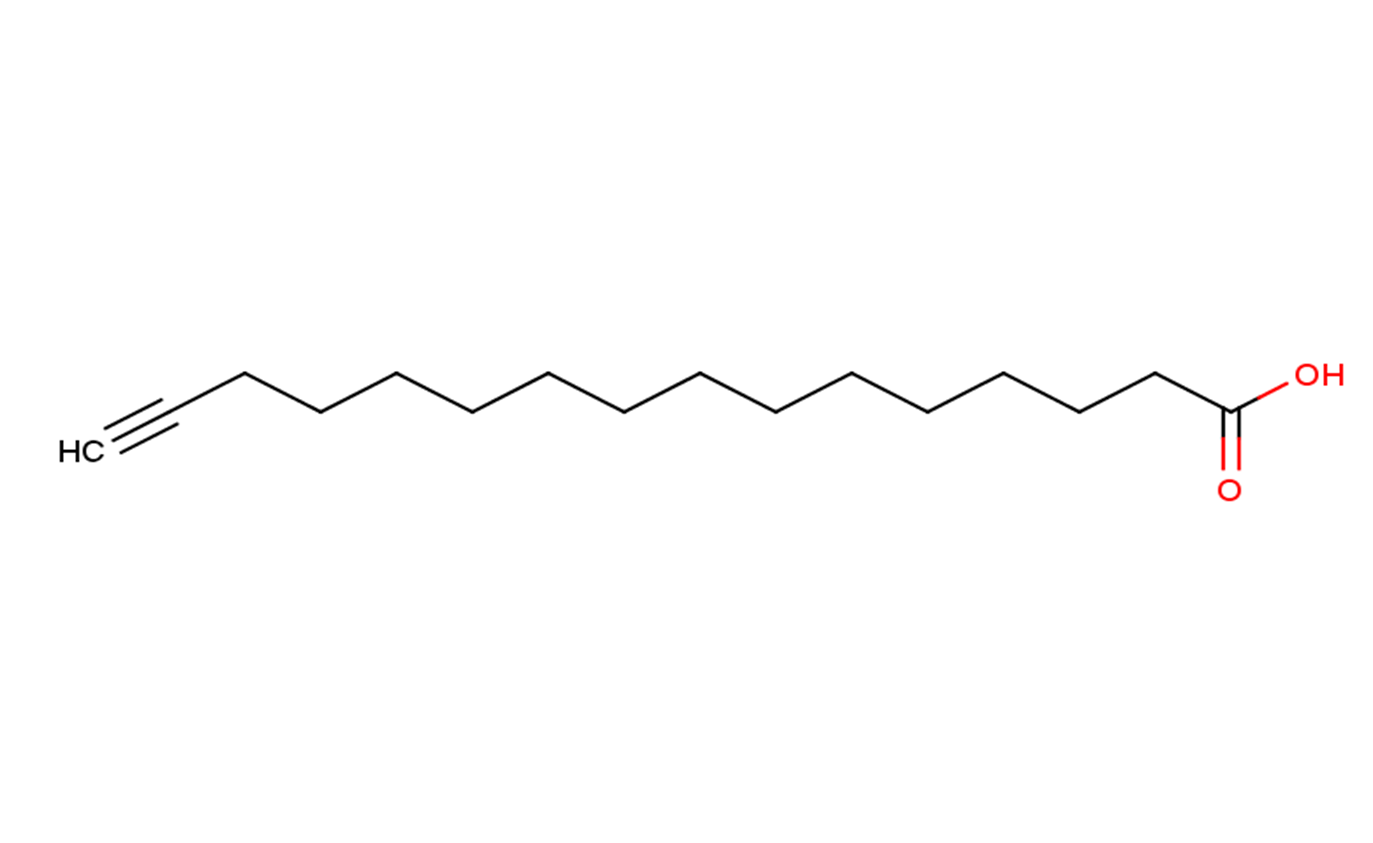
Alkynyl Palmitic Acid
CAS No. 99208-90-9
Alkynyl Palmitic Acid( —— )
Catalog No. M25028 CAS No. 99208-90-9
Alkynyl Palmitic Acid is an alkyl chain-based PROTAC linker that can be used in the synthesis of PROTACs.
Purity : >98% (HPLC)
 COA
COA
 Datasheet
Datasheet
 HNMR
HNMR
 HPLC
HPLC
 MSDS
MSDS
 Handing Instructions
Handing Instructions
| Size | Price / USD | Stock | Quantity |
| 5MG | 335 | In Stock |


|
| 10MG | 484 | In Stock |


|
| 25MG | 771 | In Stock |


|
| 50MG | 1035 | In Stock |


|
| 100MG | Get Quote | In Stock |


|
| 200MG | Get Quote | In Stock |


|
| 500MG | Get Quote | In Stock |


|
| 1G | Get Quote | In Stock |


|
Biological Information
-
Product NameAlkynyl Palmitic Acid
-
NoteResearch use only, not for human use.
-
Brief DescriptionAlkynyl Palmitic Acid is an alkyl chain-based PROTAC linker that can be used in the synthesis of PROTACs.
-
DescriptionAlkynyl Palmitic Acid is an alkyl chain-based PROTAC linker that can be used in the synthesis of PROTACs.
-
In VitroPROTACs contain two different ligands connected by a linker; one is a ligand for an E3 ubiquitin ligase and the other is for the target protein. PROTACs exploit the intracellular ubiquitin-proteasome system to selectively degrade target proteins.
-
In Vivo——
-
Synonyms——
-
PathwayPROTACs
-
TargetPROTAC
-
RecptorAlkyl-Chain
-
Research Area——
-
Indication——
Chemical Information
-
CAS Number99208-90-9
-
Formula Weight252.39
-
Molecular FormulaC16H28O2
-
Purity>98% (HPLC)
-
SolubilityDMSO:100 mg/mL (396.21 mM; Need ultrasonic)
-
SMILESC#CCCCCCCCCCCCCCC(O)=O
-
Chemical Name——
Shipping & Storage Information
-
Storage(-20℃)
-
ShippingWith Ice Pack
-
Stability≥ 2 years
Reference
1.An S, et al. Small-molecule PROTACs: An emerging and promising approach for the development of targeted therapy drugs. EBioMedicine. 2018 Oct;36:553-562
molnova catalog



related products
-
BETd-260 trifluoroac...
BETd-260 trifluoroacetate (ZBC260, BETd 260 TFA) is a novel PROTAC BET degrader that tether HJB97 to a ligand for the E3 ubiquitin ligase VHL.
-
m-PEG24-NH2
m-PEG24-NH2 is a PEG-based PROTAC linker that can be used in the synthesis of PROTACs. PROTACs contain two different ligands connected by a linker; one is a ligand for an E3 ubiquitin ligase and the other is for the target protein. PROTACs exploit the intracellular ubiquitin-proteasome system to selectively degrade target proteins.
-
TCO-NHS ester
TCO-NHS ester is a alkyl/ether-based linker for PROTACs which joins two essential ligands, crucial for forming PROTAC molecules.



 Cart
Cart
 sales@molnova.com
sales@molnova.com


